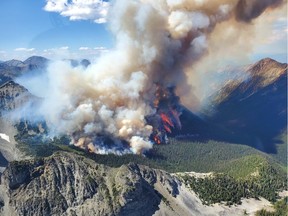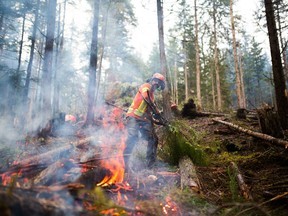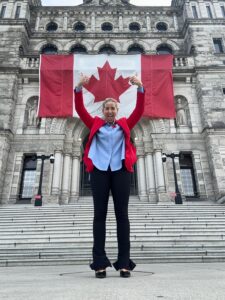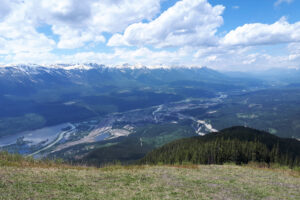Community group builds resilience to wildfires through logging to create open spaces, thinning timber and cutting underbrush
In the Slocan Valley in B.C.’s southern Interior, a community group has used logging rights and responsibilities granted by the province to help reduce wildfire risk.
That model — where a community has stewardship of the forests in its surrounding area — could help other communities successfully confront the increasing threat of climate-driven wildfire in B.C., says Stephan Martineau, the manager of the Slocan Integral Forestry Cooperative, known as SIFCo.
He’s an advocate of putting wildland-urban interface areas surrounding communities — including First Nations – under its own stewardship system, so communities can directly tackle the wildfire risk.
Without such a model, communities are restricted to the much smaller footprint of their own municipal lands and face obstacles getting access or cooperation on Crown land and land with other interests.
“I talk it up all the time… Everyone nods. Everyone goes, ‘Wow. That’s a big sell’,” said Martineau.
The issue of reducing wildfire risk is one of several that B.C. communities face in building up climate resilience as extreme heat, droughts, wildfires and floods are expected to increase in severity and frequency. A prime example is this year’s wildfire season, where more than 1 million hectares have burned already, and which B.C. Premier David Eby remarked this week could possibly be the worst in a century.

For 15 years, the Slocan Valley co-operative has been managing a forest area that encompasses the communities of New Denver, Slocan, Winlaw and others — and which covers about 160 square kilometres, an area nearly 40 times the size of Stanley Park.
The area-based rights, called a community forest, allow the residents to have a say on logging and preserving natural values. It also has allowed the community to build resilience to wildfires through logging to create open spaces and thinning timber, cutting underbrush and the lower limbs of trees. Other actions include removing woody debris from the forest floor and intentionally setting fires, known as prescribed burns.
The methods help reduce the spread of wildfire because it keeps the fire on the ground and prevents it from climbing trees where it can create fast-moving fires from treetop to treetop, called crown fires.
As a result of this work, in the summer of 2021, firefighters were able to use a cleared area in the forest as an anchor to set a back burn, an intentionally lit fire meant to travel in the direction of the fire and burn up fuel to successfully stop the fire’s larger spread.
Martineau said it’s satisfying to know that the work carried out did what it was supposed to do.
“With climate change predictions pointing to a rise in wildfires, it’s crucial that we change the way fire spreads through the forest by reducing fuel loads now. This is the key to preserving the beautiful forests we cherish for generations to come,” said Martineau.
He said there will be times when their work may have been successful but they won’t know it, for example, when there is a lightning strike in an area where fuel has been removed and a fire does not ignite.
Martineau noted there are thousands of summer lightning strikes every year.
Other communities with community forests have also been successful in carrying out wildfire mitigation, including Logan Lake, where that work was credited with keeping the community from being overwhelmed by a raging wildfire in 2021.
In the Slocan valley, the co-operative has carried out wildfire risk reductions on nearly 10 square kilometres of a planned 12 square kilometres.
Martineau said the co-operative would not have been able to carry out all the work without the help of the Forest Enhancement Society of B.C., which is funded by the B.C. government.
The enhancement society has provided $2.25 million to carry out wildfire risk mitigation work.
The task of reducing wildfire risk around communities is huge. A 2022 Postmedia investigation found that in two decades less than 10 per cent of work has been completed on more than 11,000 square kilometres of forested land identified by the province as needing wildfire risk reduction in and around communities.
The cost to do all the work could be as much as $6 billion.





